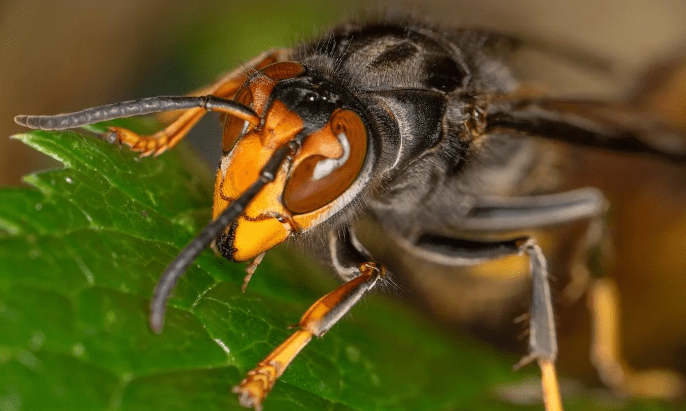In a first for Northern Ireland, an Asian hornet has been officially confirmed in the Belfast suburb of Dundonald, triggering a swift response from environmental officials.
The Northern Ireland Environment Agency (NIEA) reported that the invasive insect was captured last Friday by a vigilant member of the public.
Invasive Asian Hornet Spotted in Belfast
The hornet also known as the yellow-legged hornet originates from East Asia and has been increasingly recorded across Europe since it was first detected in France in 2004.
This latest sighting marks a significant development, as Northern Ireland had previously remained untouched by this invasive species.
A Quick Look: Why It Matters
- First confirmed Asian hornet sighting in Northern Ireland
- Species poses serious risk to pollinators like honeybees and hoverflies
- Public urged to report any sightings through official channels
- Hornet was found in Dundonald, East Belfast
Minister Issues Warning Over Threat to Ecology
Andrew Muir, Minister for Agriculture, Environment and Rural Affairs (DAERA), voiced his concern over the potential impact of this species: “This is a harmful species that I do not wish to see becoming established in Northern Ireland as it presents a serious threat to both biosecurity and local ecology, particularly valuable pollinating insects.”
Although current evidence suggests it was a lone insect, NIEA has activated a rapid response protocol to determine whether additional hornets or nests may exist in the area.
“I am grateful to the Dundonald householder who captured and reported the Asian hornet and would urge the public to remain alert to the potential presence of this insect,” Muir added.
The Asian hornet may look unassuming, but it’s a ruthless predator. It feeds on honeybees, wasps, and other pollinators posing a major ecological threat.
Their sting can also cause severe allergic reactions in humans, much like bees, although they are not naturally aggressive towards people unless disturbed.
The key concern? Their impact on native biodiversity and pollination systems vital for farming and wild flora.
Surge in Sightings Across the UK
The threat isn’t isolated. Across the UK, sightings have surged this year:
| Year | Credible Sightings | Nests Destroyed |
|---|---|---|
| 2023 | 71 | 24 |
| 2024 | 72 | 56 |
| 2025 (so far) | 429 | 112 |
As of 11 September, the National Bee Unit (NBU) confirmed a worrying 429 credible sightings and 112 nests.
Since 2016, 191 nests of the yellow-legged hornet have been discovered and destroyed throughout the UK. Some nests have housed up to 6,000 hornets, amplifying concerns over how rapidly a single sighting can escalate.
Monitoring Underway in Northern Ireland
Specialist traps and surveillance equipment are now in use to determine whether the Belfast hornet was alone or part of a larger nest.
If more hornets are detected, NIEA and DAERA will initiate “intensive monitoring” to eliminate any nests and prevent further spread.
Authorities are calling on the public to help stop the spread by reporting any sightings immediately.
“Be vigilant,” the department advises. “Do not disturb any suspected nests.”
Sightings can be reported via:
- Asian Hornet Watch App: https://www.brc.ac.uk/app/asian-hornet-watch
- CEDaR Invasive Species Online: http://www2.habitas.org.uk/records/ISI
Photos are especially helpful in identifying the species correctly.
How to Spot an Asian Hornet:
- Smaller than the native European hornet
- Distinct yellow-tipped legs
- Dark abdomen with a single orange band
- Nests often found high in trees or in roof spaces
With the growing number of sightings, experts warn it may only be a matter of time before this species becomes a more permanent problem across the UK unless strong action is taken now.
Keep your eyes peeled, especially if you’re out in gardens or green spaces. Early detection is the best line of defence.






